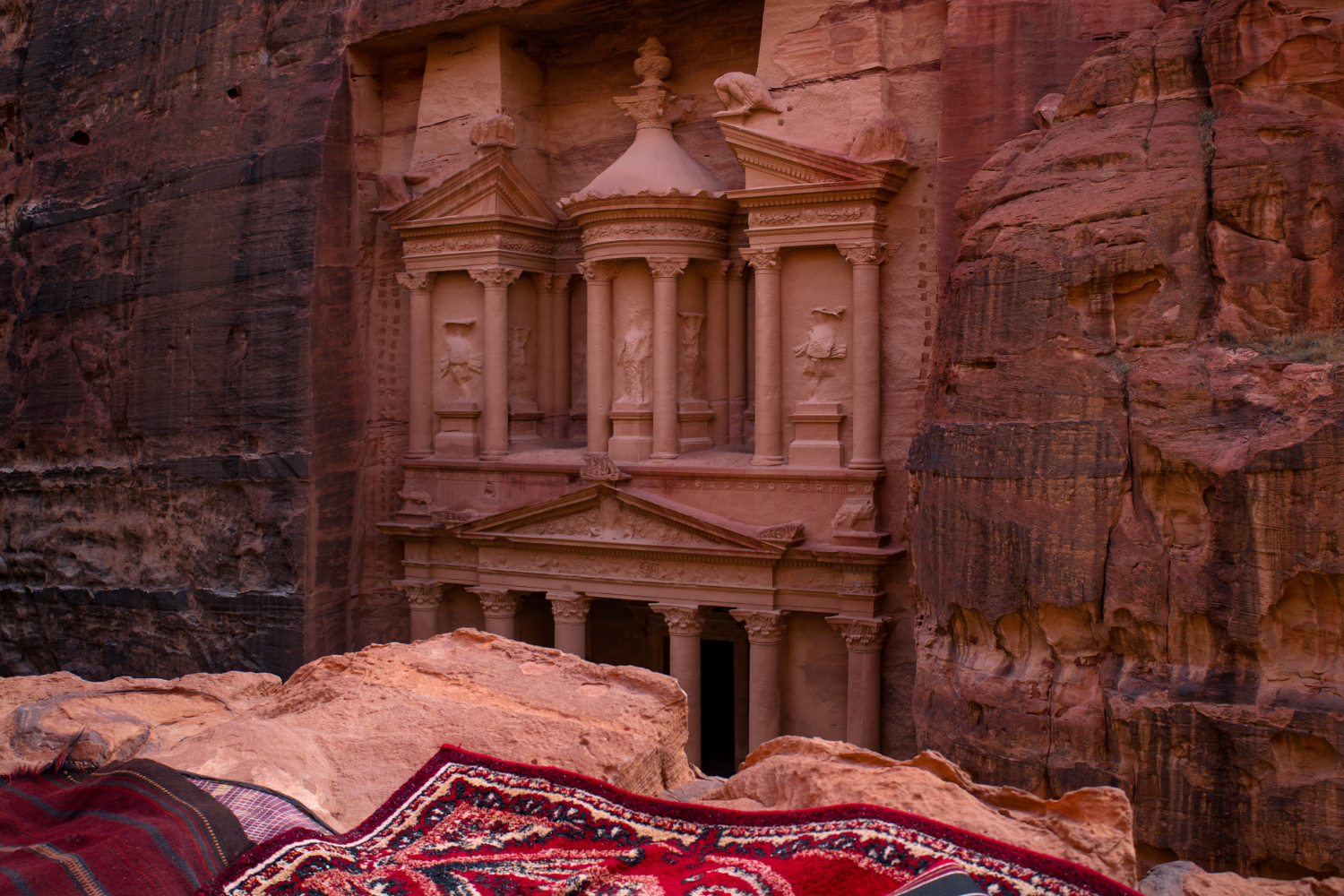Hidden behind a narrow canyon and carved into rose-colored sandstone cliffs lies Petra, Jordan’s crown jewel and one of the world’s most spectacular archaeological sites. Known as the “Rose City” because of the hue of the rocks, Petra is not just a symbol of Jordan—it’s a symbol of ancient human ingenuity, resilience, and architectural brilliance.
A Journey Through Time
Petra was once the thriving capital of the Nabataean Kingdom as early as the 4th century BC. It served as a vital crossroads between Arabia, Egypt, and the Mediterranean world, flourishing thanks to its strategic position on key trade routes. Today, it stands as a UNESCO World Heritage Site and one of the New Seven Wonders of the World, drawing visitors from all over the globe.
Walking through Petra feels like stepping back in time. The entrance begins with the Siq, a narrow, winding gorge flanked by towering cliffs that rise up to 80 meters. The dramatic journey through the Siq culminates in the most famous view in Petra—the sudden and breathtaking sight of the Treasury (Al-Khazneh), carved majestically into the rock face.
What to See and Do in Petra
While the Treasury may be Petra’s most photographed monument, the site offers so much more. Visitors can explore:
- The Street of Facades: A row of grand tombs carved into the cliffside.
- The Royal Tombs: Large and intricately designed burial chambers of Nabataean royalty.
- The Roman Theater: With a capacity of around 4,000 spectators, it reflects Roman influence during their rule.
- The Monastery (Ad-Deir): A challenging climb of 800 steps leads to this massive monument, larger even than the Treasury.
In addition to its architectural marvels, Petra is surrounded by natural beauty, with trails offering panoramic views of the surrounding desert and mountains. For adventurous travelers, hiking the High Place of Sacrifice or the back route to the Monastery provides a different and equally rewarding perspective of Petra’s grandeur.
Local Culture and Hospitality
One of the most enriching aspects of a visit to Petra is interacting with the local Bedouin community, many of whom have ancestral ties to the site. These hospitable locals often offer guided tours, camel or donkey rides, and handmade crafts for sale. Don’t miss a chance to sit down for sweet mint tea or learn about Bedouin traditions firsthand.
Tips for Visiting Petra
- Best Time to Visit: Spring (March-May) and autumn (September-November) offer pleasant temperatures for walking and exploring.
- What to Bring: Comfortable walking shoes, sun protection, and lots of water.
- Petra by Night: A magical experience where the Siq and Treasury are lit by over 1,500 candles, accompanied by traditional music.
A Must-Visit Destination
Petra is not just a tourist attraction; it’s a life-changing experience. The sense of awe and wonder that fills you as you walk through this ancient city is something you’ll carry forever. Whether you’re a history buff, a photographer, an adventurer, or a spiritual seeker, Petra speaks to everyone in a language of timeless beauty.

